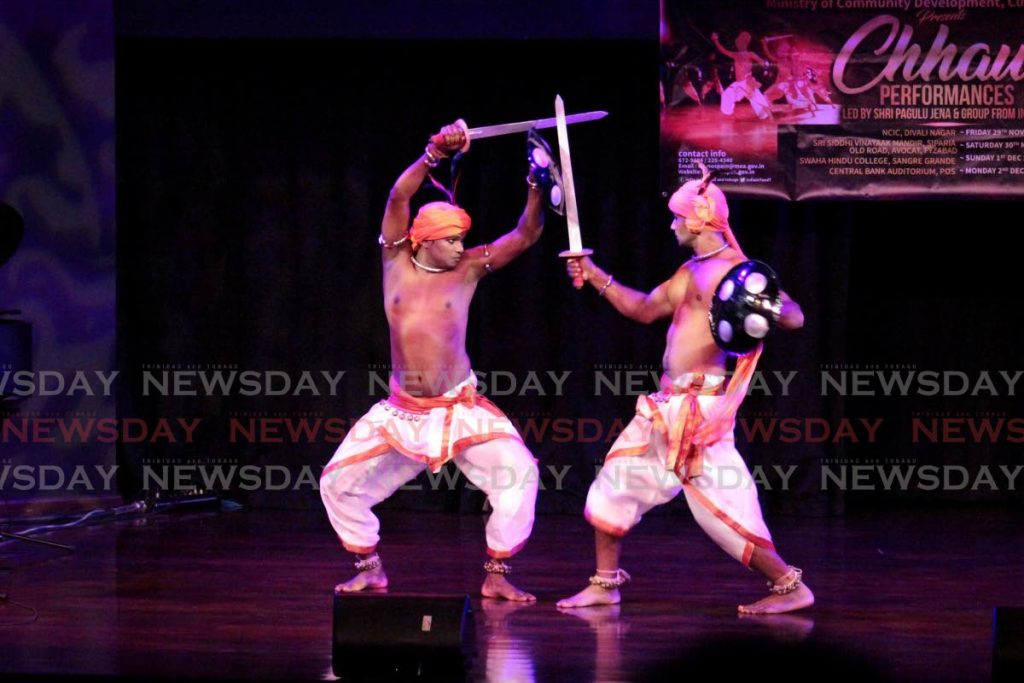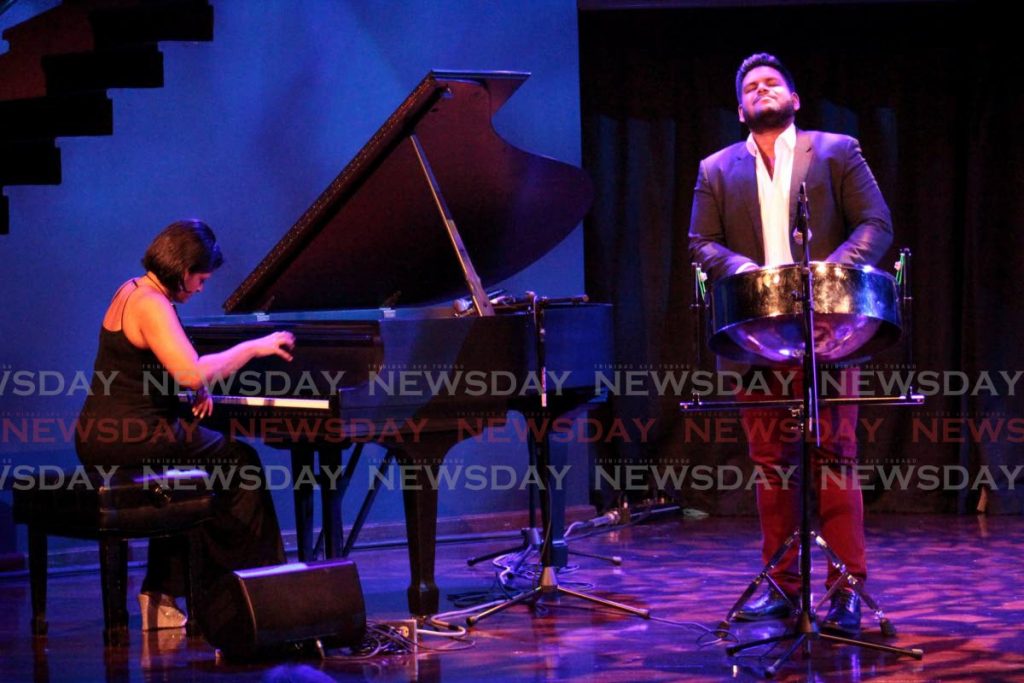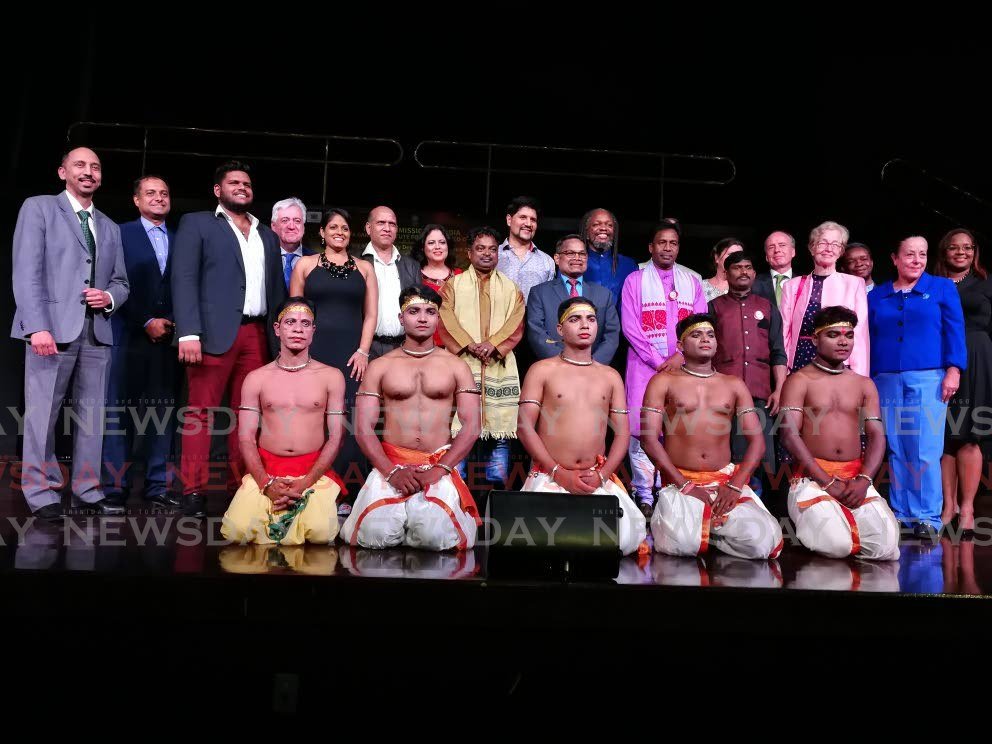Epic mix of TT, India culture

An epic mix of cultures of TT and India highly-entertained an appreciative audience at the Central Bank auditorium, Port of Spain. The cultural initiative featured the well-known Mayurbhani Chhau Group of India, with performances by talented local pannist Johann Chuckaree and his equally talented sister Johanna Chuckaree on piano.
The cultural exchange experience entitled Projeet Chhaui was hosted by the Ministry of Community Development, Culture and the Arts in collaboration with India's High Commission on December 2.
In his welcome address, Indian High Commissioner Arun Kumar Sahu, who completed three months in TT on the date of the event, said the visit of the Mayurbhanj Chhau Group is the first of his tenure. He made it known that he would like to present one cultural troupe from India every three or four months, to provide an opportunity for cultural understanding of other cultures and traditions, whilst strengthening the relationship between the two nations.

Photo taken from the Indian High Commission Facebook page. -
Sahu said: “India has a number of semi-classical and folk dances apart from the six main classical dance forms. Mayurbhanj Chhau is one of the semi-classical dances performed during festive season. It originated in eastern India.”
On stage, Pagulu Jena on nagara (big drum), Biranchi Mohanta on the muhuri (flute) and Nabakishore Ghadei on dhol (double-headed drum), immediately captivated the audience. Then came a solo dancer to perform the Dance of Nataraja
The item revealed the nature of Lord Shiva and acts as a metaphor for the never-ending phenomenon of creation and destruction in the universe. The dancer did a series of poses, or asanas in which Lord Shiva stands to witness the cosmos, dwelling in his infinite, meditating self. There was a myriad of emotions on stage during this performance. Then, when the dancer sat down to meditate, he appeared disturbed by a demonic entity. At that moment, Shiva unleashes the fire of his third eye to burn and destroy attachments and petty illusions, ending with smiles of triumph.

Photo taken from the Indian High Commission Facebook page. -
The first appearance by the brother and sister music sensation, Johann on pan and Johanna on classical piano, saw them play the ever-popular 1949 hit Suhaani Raat (Mohammad Rafi), that earned them gracious applause.
Four Mayurbhani Chhau dancers returned to do one of their most popular and worldly-acclaimed group presentations, the famous and historical war dance, Ruk Mar Nacha, complete with swords and shields.
This dance is a highly-stylised martial mock fight. It was presented to many dignitaries in the 1972 Asian Games at New Delhi, and has since been performed many times at Republic Day celebrations at Rashtrapati Bhawan, as well as entertained many dignitaries on different occasions.
The Chuckarees returned to give the audience two love songs Kal Ho Naa Ho (Sonu Nigam) and Tum Hi Ho (Arijit Singh) from the 2013 movie Aashiqui 2. Their performance was so soothing and romantic, they captivated the audience.

Then came the Mayurbhani Chhau group to do a dance titled Pandavas or Five Brothers, which depicts a show of strength in a battle against their opponents called Kauravas in the Indian Epic Mahabharata. It featured dancers Sachina Dhada, Tarjan Ghadei, Prabin Kumar Das, Lalu Mohanta and Biranchi Mohanta.
The Chuckarees closed the show with Trini to D Bone (Carl Jacob and David Rudder) and Savannah Grass (Kees Dieffenthaller), much to the delight of the audience.


Comments
"Epic mix of TT, India culture"